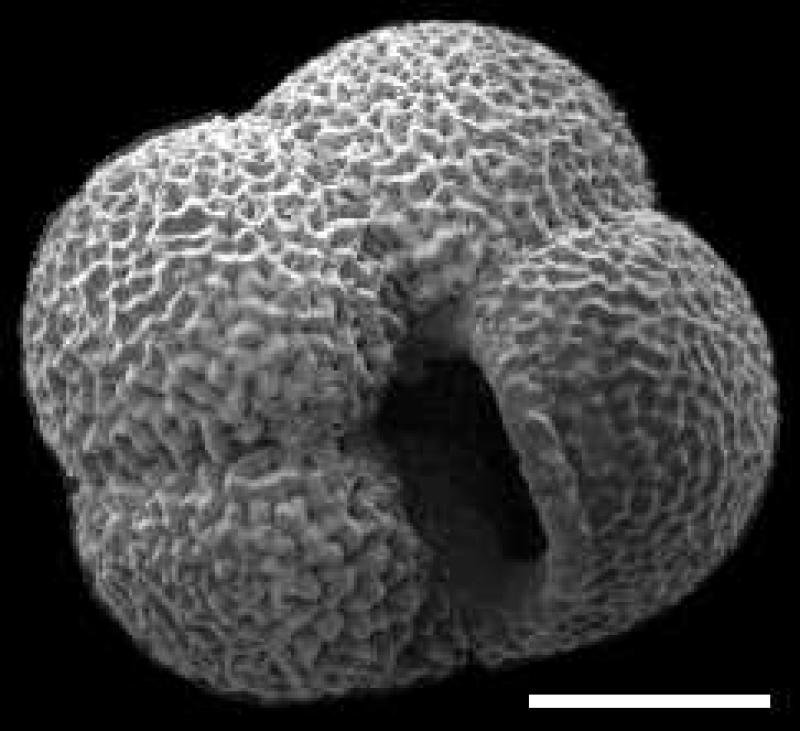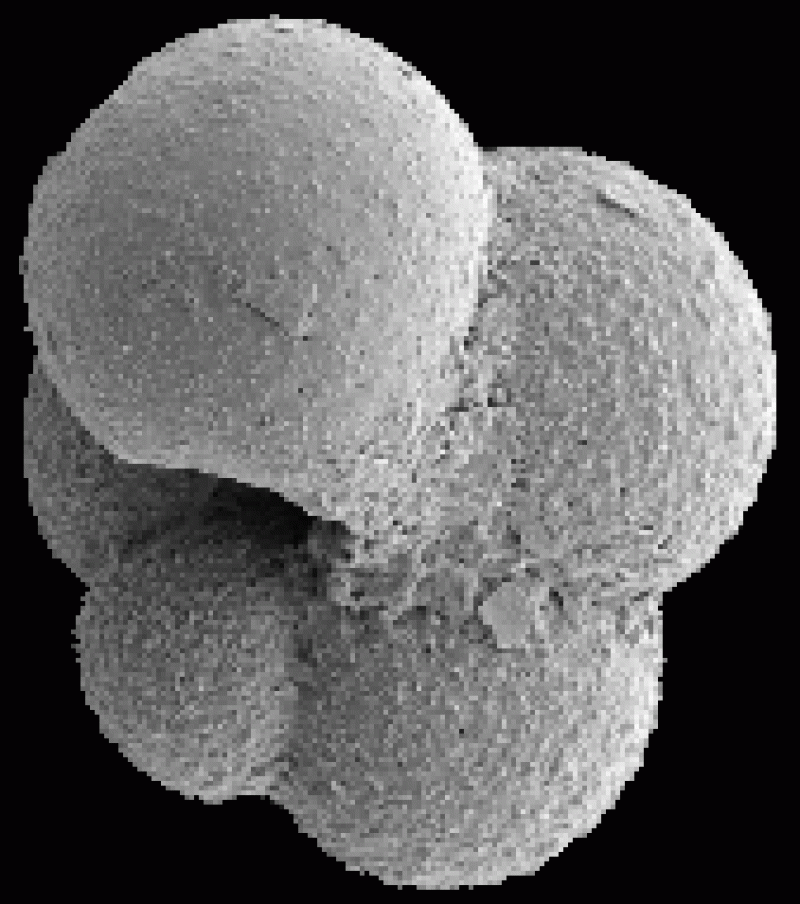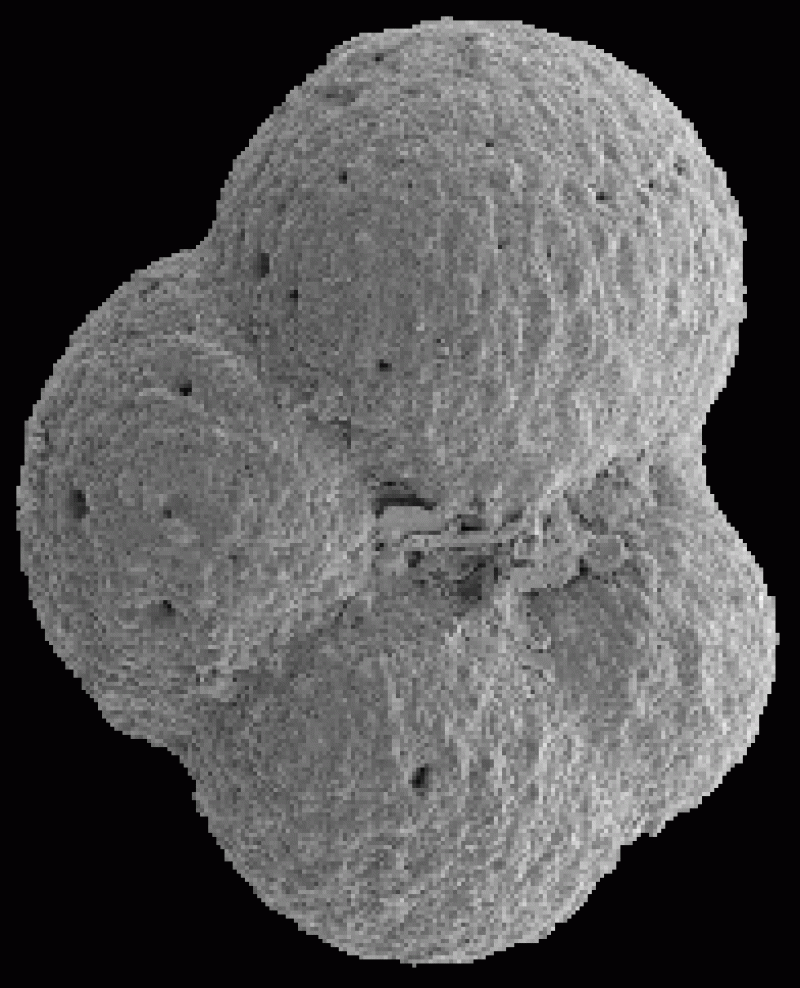Neogloboquadrina pachyderma
Neogloboquadrina pachyderma (Ehrenberg 1894)
Globigerina pachyderma (Ehrenberg). Be 1960, p 66 text-fig 1a-c.
Globorotalia pachyderma (Ehrenberg). Vilks, 1975, p. 321, pl 1 figs.1-3 and pl 2 figs. 1-3.
Neogloboquadrina pachyderma (Ehrenberg). Kennett and Srinivasin 1980, p 148 pl 3 figs 1-13.

- Umbilical view, scale bar 0.1 mm
- Left-coiled specimen.
- Collected: Aug. 1991, RV Dalnie Zelentsy, Franz Josef Land sounds, 150 mwd, modern deposits

- Umbilical view.
- Right-coiled (Dextral) specimen.
- Collected: summer1992 U.S.G.S. cruise, Arctic continental slope off Alaska (Chukchi Borderland, 75º 44.65’N, 160º 55.73’ W), 2103mwd, modern hemipelagic mud

- Umbilical view.
- Left-coiled (sinistral) specimen.
- Collected: summer1992 U.S.G.S. cruise, Arctic continental slope off Alaska (Chukchi Borderland, 75º 44.65’N, 160º 55.73’ W), 2103mwd, modern hemipelagic mud
Remarks:
The most abundant planktonic foraminifer of high latitudes; as any planktonic foraminifer, avoids low-salinity and shallow waters. The left-coiled morphotype prevails at lowest temperatures and occurs throughout the Arctic Ocean. On the Barents-Kara shelf, tests of N.pachyderma are abundant mostly in sediments underlying Atlantic-derived waters, that is, in troughs 300-600 mwd extending from the continental margin to the shelf interior.
